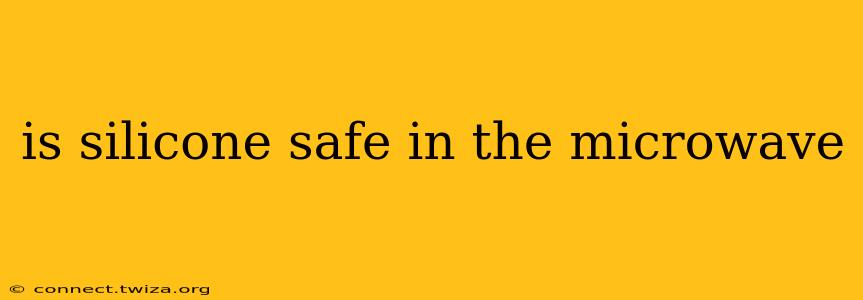Silicone is a popular material for kitchenware, prized for its flexibility, heat resistance, and non-stick properties. But a common question arises: Is silicone safe in the microwave? The short answer is generally yes, but there are crucial factors to consider to ensure both your safety and the longevity of your silicone products.
What Makes Silicone Microwave-Safe?
Silicone's inherent properties make it a suitable choice for microwave use. It's a non-reactive material, meaning it won't leach chemicals into your food even at high temperatures. This is in contrast to some plastics, which can release harmful substances when heated. High-quality silicone is also designed to withstand significant temperature fluctuations without melting or warping, a key characteristic for microwave cooking.
Which Silicone Products are Microwave-Safe?
Not all silicone products are created equal. Look for products specifically labeled as "microwave-safe." This designation indicates that the manufacturer has tested the item to ensure it can withstand the heat and frequency of microwave ovens without degrading or releasing harmful substances. Avoid using silicone products that lack this labeling, as their suitability for microwave use is uncertain.
What to Watch Out For When Using Silicone in the Microwave
While generally safe, there are some precautions to take:
1. High-Heat Considerations
While silicone is heat-resistant, extremely high temperatures or prolonged exposure to intense heat can still damage some silicone products. Avoid using silicone items for recipes requiring extremely high heat, and monitor their condition regularly. Overheating can lead to discoloration or warping.
2. Metal Inclusions
Some silicone products may contain metal components, such as those used for handles or attachments. These metal parts are typically not microwave-safe. Always ensure that any metal elements are removed before placing the silicone product in the microwave.
3. Silicone's Durability Over Time
Repeated use in the microwave, especially at high temperatures, can gradually degrade the silicone's properties over time. Regularly inspect your silicone products for any signs of wear and tear, such as cracking, discoloration, or warping. Replace damaged items to prevent potential hazards.
4. Cleaning and Maintenance
Proper cleaning is crucial for maintaining the safety and longevity of your silicone kitchenware. Hand-washing with mild soap and water is recommended, although many silicone products are also dishwasher-safe. Always check the manufacturer's instructions before using your dishwasher.
Is Silicone Baking Mat Safe in the Microwave?
Yes, silicone baking mats designed for oven use are usually also microwave-safe. Again, always check the manufacturer's instructions on the product packaging. These mats are often specifically designed to handle high temperatures and are a great alternative to parchment paper.
Can I Use Silicone Utensils in the Microwave?
Silicone spatulas and other utensils are generally safe for use in the microwave. However, it is best practice to remove them before cooking to prevent them from overheating and potentially melting.
Can Silicone Food Containers Be Used in the Microwave?
Generally, yes, if specifically labeled as microwave-safe. Always check the manufacturer's instructions to ensure they can withstand the heat of the microwave.
By following these guidelines and carefully selecting your silicone products, you can confidently enjoy the convenience and safety of using silicone in your microwave. Remember always to check the manufacturer's instructions for specific guidance on microwave usage.
